| |
|
The Polyptych of the Misericordia is one of the earliest works of the Italian Renaissance master Piero della Francesca's, located in the Pinacoteca Comunale of Sansepolcro. The central panel is of the common motif of the Virgin of Mercy or Madonna della Misericordia in Italian. The Madonna della Misericordia or Virgin of Mercy is a traditional motif in Christian art which displays the Virgin Mary with an outstretched mantle. In the image, she uses her mantle to protect her worshippers. [1]
In 1445, the Compagnia della Misericordia, a confraternity of Borgo San Sepolcro, commissioned Piero to paint a polyptych for them. According to the taste of the time, the polyptych was to be painted with precious colours and have a solid gold background. Piero did not respect the three year time limit set down in the contract — he was busy working on many other projects. The polyptych was only finished seventeen years later in 1462.
The last part of the polyptych to be painted was the main central panel showing the Madonna della Misericordia. The panel portrays the mercifully protective gesture of the Madonna enfolding her followers in her mantle.
Piero resolves the difficulty of dealing with a flat solid gold background, requested by the patrons, by placing the kneeling members of the confraternitas (who commissioned the altarpiece) in the realistic space created by the Madonna's mantle, a space resembling the apse of a church. Notably, the Madonna is still portrayed larger in size than the human figures, as tradition in the medieval painting. However, the plastic rendering of the figure, inspired by Masaccio, and the perspective study, inspired by Brunelleschi, are plainly Renaissance. |
|
|
|
|
|
During this period Piero was assisted by another painter who is responsible for the execution of the predella and for the six figures on the side pilasters.
The painter of the predella and the pilasters was identified by Salmi (1942) as Giuliano Amadei from Camaldoli, who in 1460 signed the triptych in Pieve at Tifi, not far from Caprese. The collaboration with Piero began around 1446 when Amadei left Florence, or 1456 when he left Cesena. [2] Amadei was a Camaldolese monk who trained in Florence in the circle of Fra Angelico before assisting Piero della Francesca at Borgo Sansepolcro. In Rome, Amadei became one of the most prolific illustrators of manuscripts. The vine decoration, interspersed with putti, was extremely popular in humanist circles.
The oldest two panels, to the left of the main panel, depict St. Sebastian and St. John the Baptist. St. Sebastian'panel shows a close connection with Masaccio's nudes. No other figure of Piero's, more than this St Sebastian, shows such close connection with Masaccio's nudes, even in his rather graceless but realistic pose. Piero painted the outlying panels of the tympanum later, including the Crucifixion at the top centre, St. Benedict, the Angel, the Madonna of the Annunciation, and St. Francis in the sides. Towards 1450 he finished the figures of St. Andrew and St. Bernardino. The predellas, with five scenes of Jesus's life, were mostly executed by assistants.
Aldous Huxley described the painting as the most beautiful in the world, which fortunately was remembered by a British artillery officer in 1944 during World War II, who avoided shelling the town as the Allies advanced through Italy .
The oldest parts are the two panels with St. Sebastain and St John the Baptist, to the left of the main panel. A little later Piero painted the panels of the tympanum, with the Crucifixion in the centre, and St Benedict, the Angel and the Madonna of the Annunciation, and St Francis in the sides. Towards 1450 Piero finished the figures of St Andrew and St Bernardino.
The last part of the polyptych is this central panel showing the Madonna della Misericordia (Madonna of Mercy). The difficulty of dealing with a solid gold background, requested by the patrons, is solved here by Piero by placing the kneeling members of the confraternitas (who commissioned the altarpiece) in the realistic space created by the Madonna's mantle, held open around the figures like the apse of a church. The Virgin is perfectly central positioned and she is seen frontally. [3]
|
|
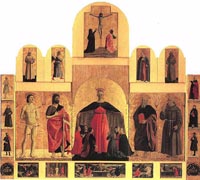 |
| |
|
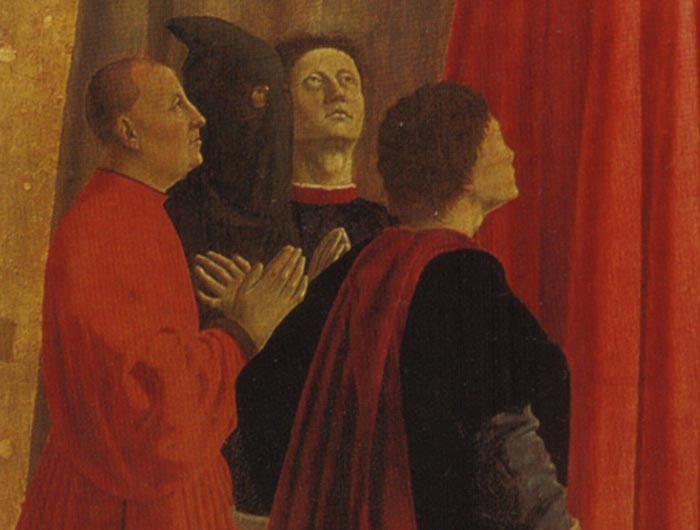 |
Piero della Francesca, Polyptych of the Misericordia, 1444-1465, tecnica mista su tavola, 273x330 cm, Museo Civico, Sansepolcro
|
Ai lati della Vergine, nel registro principale, si trovano, da sinistra, San Sebastiano, trafitto dalle frecce, San Giovanni Battista, con la veste marrone da eremita nel deserto, la barba, il bastone e il cartiglio con Ecce Agnus Dei, Ecce qui tollit pecc[ata mundi], San Giovanni Evangelista, con il libro e la veste rossa, e San Bernardino da Siena, con l'abito francescano. La tavola di Sebastiano e Giovanni è generalmente indicata come la prima ad essere dipinta. La presenza di Sebastiano è legata alla protezione dalle pestilenze e per questo di numerose confraternite; fin dal primo Rinascimento il santo venne di preferenza raffigurato nudo e trafitto di frecce, offrendo agli artisti l'occasione per mettere in pratica gli studi di anatomia. Giovanni, protettore di Firenze e protettore delle malattie della gola, è rappresentato senza la consueta pelliccia nel gesto del predicatore, che indica la Vergine: alcuni[1] hanno messo in relazione questo atteggiamento con una citazione del San Matteo di Ghiberti a Orsanmichele, presente ad esempio anche in un Giovanni Battista di Lorenzo Monaco[2]. Bernardino, la cui presenza offre un punto d'appoggio per la datazione della tavola, è raffigurato con il volto scarno, ispirato a un ritratto postumo del senese Pietro di Giovanni d'Ambrogio, eseguito nel 1444.
Nel secondo registro si trovano al centro la Crocifissione e ai lati San Romualdo, l'Angelo annunciante, la Vergine Annunciata e San Francesco. La Crocefissione è la tavola dove si nota una maggiore dipendenza da Masaccio, con il Cristo rappresentato di scorcio ottimizzato per una veduta dal basso, migliorando il tentativo sperimentale, ma un po' goffo, della Crocifissione masaccesca di Napoli. I gesti della Vergine Maria e di Giovanni, ai lati della croce, sono ampi e drammaticamente espressivi, ricordando da vicino il pathos dell'analoga tavola masaccesca.
|
|
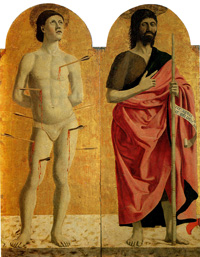
Polyptych of Misericordia: Saint Sebastian and Saint John the Baptist
|
| |
|
|
|
|
|
|
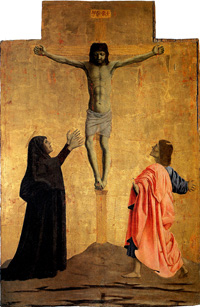
|
|
|
|
|
|
|
|
| |
|
|
|
|
During the second half of the thirteenth century, confraternities, particularly those of flagellants, flourished in Sansepolcro and were central to its identity as a Christian community. 20By the early fifteenth century, every adult male in Sansepolcro belonged to one of these sodalities, whose philanthropic activities touched the lives of each resident and pilgrim. Among the most venerable was the confraternity of Santa Maria della Misericordia. Although its original statutes are lost, other sources, including the revised statutes of 1570, provide valuable information about its history and special devotions. The most important of these was flagellation, performed within the privacy of the confraternal oratory (chapel), both as imitation of Christ and penance for sinful behavior.[4]
|
|
|
|
| |
|
|
|
| |
|
|
[1] The Virgin of Mercy is a subject in Christian art, showing a group of people sheltering for protection under the outspread cloak of the Virgin Mary. It was especially popular in Italy from the 13th to 16th centuries, often as a specialised form of votive portrait, and is also found in other countries and later art, especially Catalonia and Latin America. In Italian it is known as the Madonna della Misericordia (Madonna of Mercy), in German as the Schutzmantelmadonna (Sheltering-cloak Madonna), and in French as the Vièrge au Manteau or Vierge de Miséricorde (Virgin with a cloak or Virgin of Mercy). The subject was often commissioned by specific groups such as families, confraternities, guilds or convents or abbeys, and then the figures represent these specific groups, as shown by their dress, or by the 15th century individual portraits. Sometimes arrows rain down from above, which the cloak prevents from reaching the people.
Usually the image, whether in sculpture or painting, stands by itself, but in the most famous example, the Madonna della Misericordia altarpiece in Sansepolcro by Piero della Francesca, of 1445-62, the subject is the central panel of a large altarpiece, with a smaller Crucifixion above it, and many other panels.
Probably the oldest version known is a small panel by Duccio of ca. 1280, with three Franciscan friars under the cloak. Here the Virgin sits, only one side of the cloak is extended, and the Virgin holds her child on her knee with her other hand.
The Chiesa di Santa Maria delle Grazie in Arezzo houses a fresco of the Madonna della Misericordia by Parri di Spinello (1387-1452), the son of the more celebrated Spinello of Arezzo.
Art in Tuscany | Madonna della Misericordia | Madonna of Mercy
[2] Don Giuliano left the Florentine Convento degli Angeli in 1466, where he had been registered as pictor et eruditus nimis (Pasqui, 1926, p. 12). In 1467 he was prior of the convent of San Giorgio at Camerino. In 1470 he was appointed abbot of Santa Maria di Agnano. According to Salmi he painted miniatures for Malatesta Novello at Cesena between 1446 and 1454, and in 1462-64 was in Rome, active on behalf of Pius II; later he was to fresco in the very loggia of San Marco that had probably been designed by Francesco del Borgo. Amadei was once more in Rome, working as a miniaturist and frescoer between 1467 and 1472 (cf. Ruysschaert, 1968, Callmann, 1975, Freuler, 1991). The triptych in Tifi is certainly more stylistically advanced than his work on the Polyptych of the Misericordia, which is instead closer to the Thebaid panel, whose fragments have been reunited by Callmann and which a convincing hypothesis credits to the master before he left the Florentine convent. The collaboration with Piero began around 1446 when Amadei left Florence, or 1456 when he left Cesena. The first date is more likely than the second, both for stylistic reasons and also because the Thebaid is similar to the predella in the Misericordia. Cesena offers another due: in fact the illuminated initial with Numa Pompilius which Salmi attributes to Amadei in a manuscript of the Lives of Plutarch, in the Malatestiana Library already contains an indication of the Aix triptych, as does the predella.
[3] 'The Misericordia Polyptychis a resonant reflection of the spiritual and visual culture of Sansepolcro that helped shape Piero. As historians have recognized, the sacred and civic culture of Sansepolcro was distinctive in many respects. 11One, as mentioned above, was the town’s association with the tomb of Christ, commemorated by its name and dedication to the Holy Sepulcher; another was its importance as a site of pilgrimage. When Saints Arcanus and Giles returned to the town from the Holy Land, they brought with them priceless relics of the Passion that became objects of public veneration: 12 wood from the “most holy cross on which our Lord Jesus Christ was placed for the redemption of human sin;” drops of his blood; cloth from the shroud wrapping “the most sacred body of our Lord Jesus Christ after he was lowered from the cross;” fragments of “the stone from the Holy Sepulcher” from which “the name of this land was taken;” “hair and milk of the blessed Virgin and stone from her tomb;” and relics of John the Evangelist, the town’s patron. 13 The display of these relics on September 1– the jointly celebrated Feast of the Holy Sepulcher and of Saint Arcanus – was among the most important celebrations in the town, honored by processions, masses, and the giving of alms. 14These relics were deemed so potent that Sansepolcro became an important destination for many pilgrims in the late Middle Ages and Renaissance. '
The Cambridge companion to Piero della Francesca | edited by Jeryldene M. Wood.
[4] Attributed to Giuliano Amedei - Book: B. Laskowski, Piero della Francesca, Gribaudo, Public Domain, https://commons.wikimedia.org/w/index.php?curid=8358749
|
|
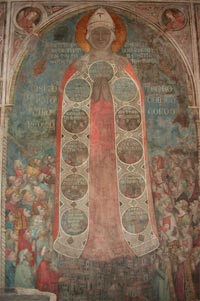
The Madonna della Misericordia, an anonymous 14th century fresco in the Bigallo, Florence
The Madonna of Mercy (Misericordia) was painted by the Bernardo Daddi school in 1342 in the building now dedicated to the Bigallo orphanage, and which had been the Misericordia Confraternity. Across from it the newer headquarters of the Misericordia still dispense medical care and run ambulances. The members of the Misericordia had laid the first stone of Florence's Cathedral seven hundred years ago. Every Maundy Thursday the Cardinal of Florence washes the feet of eleven Misericordia workers.
This fresco is one of the most important keys for unlocking the vocation and for deepening the meaning of Florence. The Madonna wears a crown like that of the Empress Matilda, with the saving Tau in blood, and it is she who protects the city with the weapons of the acts of mercy as Jesus had listed them in the Gospel, these acts being given in the medallions of her mantle that contain these words.
|
In the footsteps of Piero della Francesca
|
|
Itinerary in Tuscany| Starting from Sansepolcro, his hometown, follow this itinerary, and see his greatest work of Piero della Francesca in Sansepolcro, Perugia, Urbino, Arezzo, Rimini and eventually Florence.
Itinerary in Central Italy | In the footsteps of Piero della Francesca
|
|


Holiday accomodation in Tuscany | Podere Santa Pia | Artist and writer's residency
|
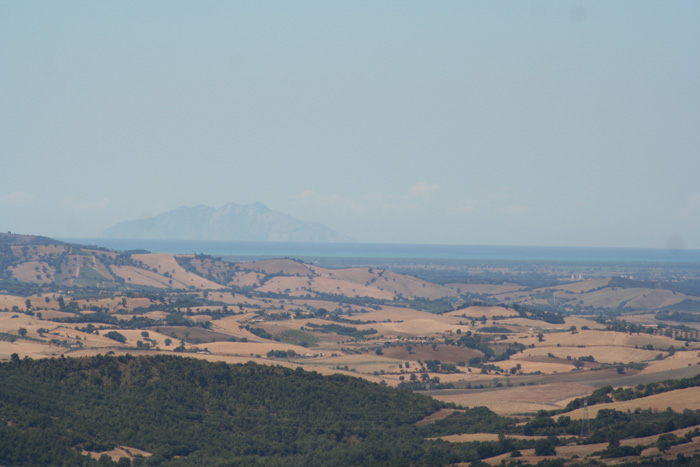 |
Podere Santa Pia, an ancient country estate, faces the gentle hills of Maremma Region, a place always admired for its views and its surrounding landscape. SabtaPia is the ideal location for those who wish to enjoy total privacy
.
|
Tuscany is filled with world-renowned wine regions, and although Santa Pia is off the beaten track it is the ideal choice for those seeking a peaceful, uncontaminated environment, yet still within easy reach of the the famous Tuscan wines. The central location of the holiday home allows you to visit the nearby beautiful villages Montalcino, Sant'Antimo, Pienza, S. Quirico d'Orcia and Montepulciano. And Brunello di Montalcino, perhaps Italy's best-known wine region, makes a good starting place for a wine tasting tour. Castello Banfi is within easy reach and Montalcino is only 28 kms away.
|
| |
|
|
|
|

. |
|
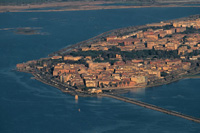 |
Podere Santa Pia |
|
Podere Santa Pia, garden view, April |
|
Orbetello |
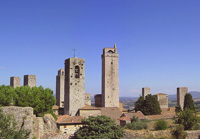 |
|
|
|
 |
| The towers of San Gimignano |
|
Montalcino |
|
Siena, Duomo |
| |
|
|
|
|
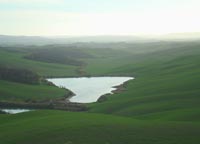 |
|
|
|
|
Asciano, between Montalcino and Siena |
|
San Quirico d'Orcia
|
|
Sansepolcro |
| |
|
|
|
|
 |
| The Villa offers its guests a breathtaking view over the Maremma hills. On clear days or evening, one can even see Corsica. |
| |
|
|
|
|
| |
|
|
|
|
| The works of Piero della Francesca | Itinerario Sansepolcro Monterchi Arezzo
The exhibition extends and becomes an itinerary throughout the territory, allowing visitors to discover Piero's works in the Bacci Chapel in the Church of San Francesco in Arezzo, in the Dome of Arezzo, in the Museum Madonna del Parto in Monterchi and in the Civic Museum in Sansepolcro.
Sansepolcro
* Polyptych of Mercy, Civic Museum
* Resurrection, Civic Museum
* San Giuliano, Civic Museum
* San Ludovico, Civic Museum
The small town of Sansepolcro, built around a great Benedictine Abbey, has kept essentially unaltered its medieval urban structure, enriched over the years with beautiful Renaissance and Baroque buildings. Sansepolcro was Piero della Francesca’s native town, and its Civic Museum is a tribute to the Biturgense artist. Works such as the Resurrection, a highly complex and symbolic work, the Polyptich of Mercy, San Giuliano and San Ludovico bear witness to the early Renaissance artist’s genius. The Cathedral has the interesting “Holy Face”, a wooden crucifix of Carolingian times, the Polyptych by Francesco di Segna and the Ascension by Perugino. The Cathedral is flanked by the manneristical Palazzo delle Laudi, now seat of the Town Council. Other artistic works may be seen just by walking around the town centre, such as the Church of Santa Maria delle Grazie and the Church of San Francesco. Visitors cannot miss the Church of San Lorenzo, with the Deposition by Rosso Fiorentino. The heart of the town centre is Piazza Torre di Berta, where, on the second Sunday of September, there is the traditional Palio della Balestra - the costumes worn by the figurantes draw from paintings by Piero della Francesca.
Civic Museum | Polyptych of Mercy
An early expression of a new form of painting, the work clearly represents the revolutionary force of Piero’s art. Within an iconography that follows a predefined traditional scheme, Piero’s figures assume extremely modern poses, typical of his own art right from its very first expressions.
Civic Museum | Resurrection of Christ
The fresco, characterised by highly geometric volumes, represents an imposing and austere Christ in all His strength.
Civic Museum | San Giuliano
An absolute, detached, and transcendental figure, in his physical built and striking geometry, the figure identified as San Giuliano is an unmistakable example of the uniqueness of Piero’s mature style.
Civic Museum | San Ludovico
The fresco (removed from Palazzo Pretorio) has a fundamental civic importance and is an example of Piero’s work in his native town; it is the only fragment left of a more complete, though now lost, work.
Monterchi
* Madonna del Parto [the Pregnant Virgin Mary], Museum Madonna del Parto
The medieval hamlet stands in a location that was considered sacred by the Romans, and where the cult of Hercules used to be worshipped.
Visitors interested in Piero della Francesca’s art cannot but stop in this small town, placed between two small valleys (Val Padonchia and Val Cerfone), surrounded by holm-oak-covered hills. Piero della Francesca’s mother was born here, as witnessed by the small museum dedicated to her figure (right in the centre of the town), which also contains the famous fresco Madonna del Parto, an extraordinary portrait of the pregnant Virgin Mary.
Museo Madonna del Parto | Madonna del Parto
Painted in just seven days, the fresco represents one of the highest examples of Piero’s art.
Madonna del Parto is a masterpiece of figurative and chromatic synthesis, of equilibrium, formal essentialism, measure and extreme emotional depth. It is the image of a profound dignity, in which the Virgin’s body is moulded by solid geometries.
Arezzo
* Legend of the True Cross, Bacci Chapel, Basilica of San Francesco
* Santa Maria Maddalena, Dome
Arezzo stands on a hill in eastern Tuscany, just behind the Apennines between Tuscany and Romagna. The architecture of its centre is evidence of the town’s ancient origins: it was one of the main centres of the Etruscans and a strategic city in Roman times. The highest part of the town is typically medieval, dominated by the Cathedral and the Medici’s Fortress. The Gothic Cathedral has valuable works of art, including Magdalene by Piero della Francesca and precious glass windows decorated with historical scenes by Guillaume de Marcillat. Right in the centre of the town, the Piazza Grande encompasses a wide range of architectural styles. Besides the medieval towers, there stands the majestic Loggiato Vasariano - one of the most interesting architectural works of the Renaissance -, the Palazzo della Fraternita dei Laici - a fine example of both gothic and renaissance style -, and the apse of the Parish Church of Santa Maria. On the third Saturday of June and on the first Sunday of September, Piazza Grande becomes the setting for the Giostra del Saracino, a medieval tournament. On the first Sunday of each month and on the previous Saturday, an important Antiques’ Fair is held in the piazza and in many areas of the historical centre. The Bacci Chapel in the Basilica of San Francesco is splendidly decorated with the extraordinary cycle of frescoes of the Legend of the True Cross by Piero della Francesca, one of the finest examples of Italian Renaissance painting. In the simple one-nave Basilica of San Domenico, visitors can admire the Cross painted by Cimabue, one of his early works. With their beauty and architectural originality, many other churches and palaces pay tribute to Arezzo’s culture and importance throughout history, including the Abbey of Sante Flora and Lucilla, the Church of Santissima Annunziata, Palazzo Pretorio and Palazzo dei Priori and, just a couple of minutes away from the city walls, the Church of Santa Maria delle Grazie, and the Romanesque Parish Church of Sant’Eugenia al Bagnoro. The city museums - the Archaeological Museum Gaio Cilnio Mecenate, the State Museum of Medieval and Modern Art, Vasari’s Museum and House, the House & Museum Ivan Bruschi - allow visitors to admire extremely valuable works.
Legend of the True Cross
The cycle of frescoes in the choir of the Basilica of San Francesco is unanimously considered to be Piero della Francesca’s masterpiece. It was restored in the first half of the 1990s thanks to the fundamental contribution of Banca Etruria [www.pierodellafrancesca.it]; its 12 scenes can thus now be fully admired in all their gripping theatricality. The cycle represents a form of humanity oriented towards its icon in its earthly and human perfection, and in which the legend, reduced to basic, assumes an epical resonance.
Dome | Santa Maria Maddalena
Solidly painted through a polished and pure colour geometry, the Magdalene, marked by traditional iconographic elements, effuses a serious and solemn sense of sacredness.
Itinerario
Visitors are invited to discover Piero della Francesca’s works in the province of Arezzo, by following an itinerary going through Valtiberina, Sansepolcro, Monterchi - the native hamlet of Piero’s mother Monna Romana - and Arezzo.
The Upper Valley of the Tevere river, or Valtiberina, is on the far east of Tuscany, and takes its name after the river that runs across it up to the border with Umbria. In the past, Valtiberina represented both the border and meeting point between different civilizations, the Umbri and the Etruscans, the Bizantines and the Longobardi. Piero della Francesca, in Borgo San Sepocro itself, was able to perceive the secrets of space and light, reflecting them into his works.
The Civic Museum of Sansepolcro, the artist’s native town, holds four works, the Polyptych of Mercy, the Resurrection, San Giuliano and San Ludovico.
After visiting Sansepolcro, the itinerary continues in Monterchi, in Val Cerfone. In Monterchi, which stands on the top of a hill on the border with Umbria, Piero della Francesca painted the extraordinary fresco of Madonna del Parto, in the old church of Santa Maria a Momentana.
The itinerary continues and ends in Arezzo. A splendid town standing on a hill in eastern Tuscany, just behind the Apennines between Tuscany and Romagna, Arezzo used to be one of the most important Etruscan cities and later became a strategic centre for the Romans. Here, Piero della Francesca painted one of the most important masterpieces of the Renaissance. The Bacci Chapel in the Basilica of San Francesco contains Piero della Francesca’s frescoed cycle of the Legend of the True Cross, painted for the Franciscan church between 1452 and 1466. The Dome of Arezzo displays the fresco Magdalene (at the bottom of the left nave).
[Source: www.mostrapierodellafrancesca.it]
Piero della Francesca and the Italian Courts |31st March – 22nd July 2007 |
|
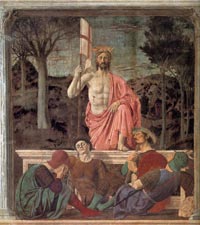 Resurrection, Civic Museum, Sansepolcro Resurrection, Civic Museum, Sansepolcro
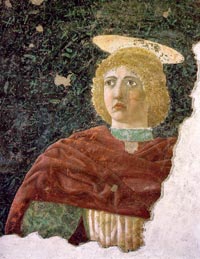 San Giuliano, Civic Museum, Sansepolcro San Giuliano, Civic Museum, Sansepolcro
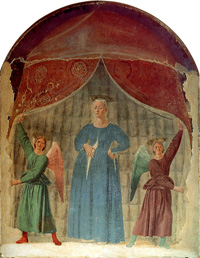
Madonna del Parto [the Pregnant Virgin Mary], Museum Madonna del Parto
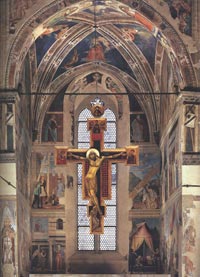 Legend of the True Cross, Bacci Chapel, Basilica of San Francesco Legend of the True Cross, Bacci Chapel, Basilica of San Francesco
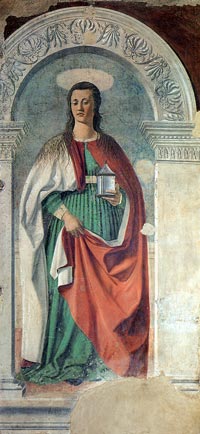 Santa Maria Maddalena, Dome, Arezzo Santa Maria Maddalena, Dome, Arezzo
|
| |
|
|
|
|
|
|
![]()

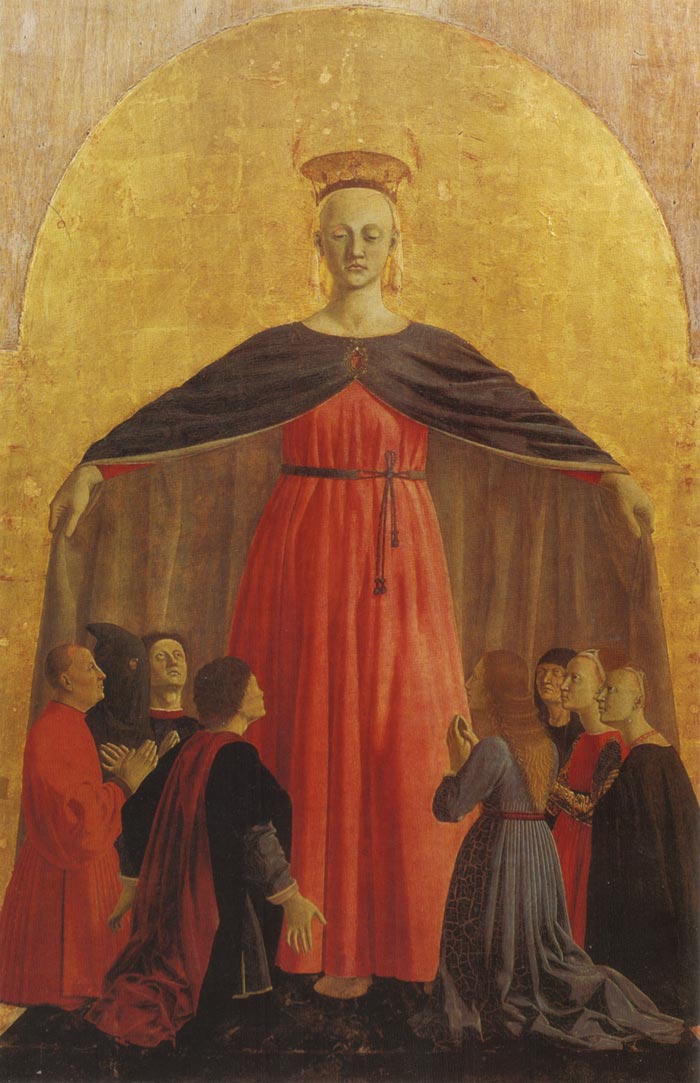



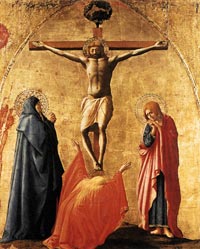

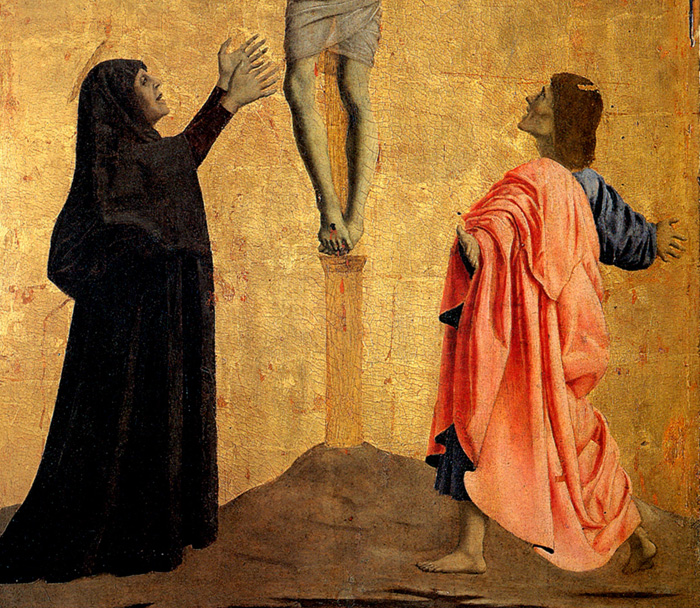






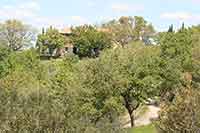



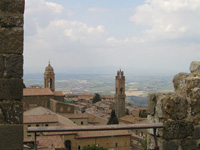


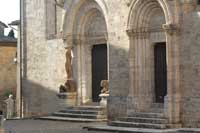
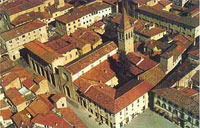

 Resurrection, Civic Museum, Sansepolcro
Resurrection, Civic Museum, Sansepolcro 


 Santa Maria Maddalena, Dome, Arezzo
Santa Maria Maddalena, Dome, Arezzo